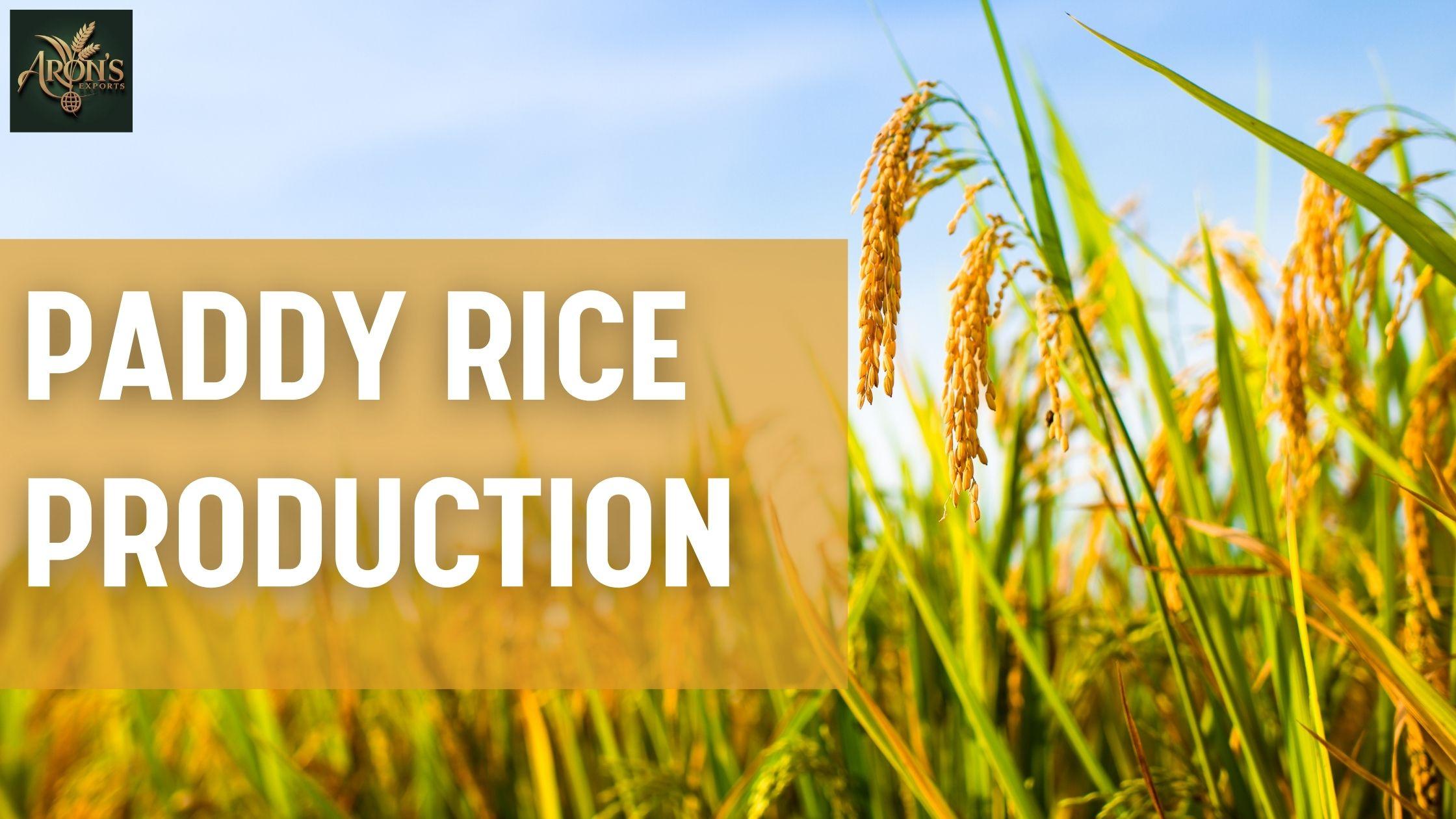Paddy Rice Production: Farming Practices for Higher Yields

Paddy rice is one of the most important staple crops in the world, feeding billions of people across Asia, Africa, and beyond. As the global population grows, the demand for rice continues to rise, placing increasing pressure on farmers to produce higher yields without compromising on quality or sustainability. Modern paddy rice production involves a combination of traditional farming wisdom and advanced agricultural techniques that enhance efficiency, protect natural resources, and ensure food security.
In this blog, we’ll explore key farming practices that contribute to higher yields in paddy rice cultivation, along with the role of innovation, technology, and sustainability in shaping the future of the rice industry.
The Importance of Paddy Rice Production in Global Agriculture
Rice is more than just a staple food; it is deeply intertwined with culture, livelihoods, and economies. According to global agricultural reports, rice accounts for nearly 20% of the world’s dietary energy supply. The efficiency of paddy rice production directly affects food security in countries that rely heavily on rice consumption.
Farmers face unique challenges such as unpredictable weather, soil degradation, pest infestations, and limited water resources. To overcome these, the adoption of modern farming practices has become essential to achieving consistent and sustainable yield growth.
Key Farming Practices for Higher Yields in Paddy Rice Production
1. Soil Preparation and Fertility Management
Healthy soil forms the foundation of productive rice farming. Proper land leveling ensures uniform water distribution across fields, reducing water wastage and uneven plant growth. Farmers also apply organic matter and fertilizers to enhance soil fertility. Balanced use of nitrogen, phosphorus, and potassium is crucial for optimum rice plant development.
Some regions are increasingly turning to bio-fertilizers and organic inputs to improve soil health naturally, reducing dependency on chemical fertilizers while promoting long-term sustainability.
2. Selecting High-Yield Varieties
The choice of seed variety plays a significant role in determining yield. High-yield and disease-resistant varieties are widely adopted to ensure maximum production under varying climatic conditions. Hybrid rice varieties, for instance, have shown significant improvements in both yield and resistance to pests compared to traditional strains.
Farmers also select varieties based on grain quality, maturity period, and adaptability to local environments. This targeted approach ensures a balance between productivity and market demand.
3. Water Management and Irrigation Techniques
Rice is typically grown in water-intensive systems, but with global concerns over water scarcity, efficient water management has become critical. Practices such as Alternate Wetting and Drying (AWD) allow farmers to save water while maintaining yield levels.
Modern irrigation systems like drip irrigation and laser land leveling further help in minimizing water loss, reducing input costs, and promoting sustainable cultivation practices. Effective water management not only improves plant growth but also reduces methane emissions from flooded fields, making rice production more climate-friendly.
4. Integrated Pest and Weed Management
Weeds, pests, and diseases can severely affect rice yields. Instead of relying solely on chemical pesticides, farmers are adopting Integrated Pest Management (IPM) strategies. These include crop rotation, biological pest control, and careful monitoring of pest populations.
By integrating natural predators, resistant varieties, and minimal chemical use, farmers can safeguard crops while reducing environmental impact. Weed management through mechanical weeders and controlled water levels also plays an important role in boosting productivity.
5. Mechanization and Modern Farming Tools
Mechanization is revolutionizing paddy rice production by saving labor, time, and costs. Tools such as transplanters, combine harvesters, and threshers have streamlined planting and harvesting operations.
Precision farming technologies, including drones and sensors, allow farmers to monitor crop health, water levels, and nutrient needs in real-time. This data-driven approach ensures timely decision-making and reduces waste, contributing to higher yields.
6. Sustainable and Climate-Resilient Practices
As climate change impacts agriculture worldwide, sustainable practices are vital. Crop diversification, organic amendments, and reduced chemical use help maintain ecological balance. Climate-resilient varieties and conservation agriculture methods are also being developed to withstand unpredictable weather and extreme conditions.
Additionally, practices such as zero-tillage and crop residue management are gaining momentum for their role in conserving soil health while cutting down greenhouse gas emissions.
The Role of Technology and Innovation in Rice Farming
Technological advancements are reshaping the way farmers approach paddy rice production. Satellite imagery, artificial intelligence, and smart farming applications provide detailed insights into crop health, pest risks, and soil conditions.
Blockchain technology is also emerging in rice supply chains to ensure transparency, quality assurance, and traceability from farm to market. These innovations not only increase yields but also improve profitability for farmers and trust among global buyers.
Challenges Facing Paddy Rice Production
Despite progress, several challenges remain in global rice farming:
-
Water Scarcity: Over-dependence on irrigation in water-limited regions.
-
Climate Change: Rising temperatures and erratic rainfall patterns.
-
Labor Shortages: Migration to urban areas reducing available agricultural labor.
-
Market Pressures: Price fluctuations and demand-supply imbalances.
Addressing these challenges requires government support, international cooperation, and farmer training programs that emphasize efficiency and sustainability.
Future Outlook of Paddy Rice Production
The future of rice farming lies in balancing high yields with environmental responsibility. As populations grow, sustainable intensification—producing more with fewer resources—will be the key to ensuring global food security. Collaboration among farmers, researchers, and industry leaders is crucial for driving innovations that make rice farming more productive and sustainable.
Companies like Aron Baijnauth are playing a valuable role in promoting efficient rice supply chains and supporting best farming practices. With increased adoption of technology, resilient varieties, and eco-friendly methods, paddy rice cultivation is poised for long-term growth.
Conclusion
Paddy rice production is not just about meeting immediate food demands—it is about ensuring a sustainable and secure future for billions of people worldwide. By adopting modern farming practices, leveraging technology, and focusing on sustainability, farmers can achieve higher yields while protecting the environment.
With continued innovation and support from global stakeholders, the rice industry will remain a cornerstone of global agriculture. Companies such as Aron Baijnauth exemplify the commitment to improving supply and promoting responsible cultivation, making a positive impact on farmers and consumers alike.
- Vibnix Blog
- Politics
- News
- Liberia News
- Entertainment
- Technology
- Formazione
- Art
- Causes
- Crafts
- Dance
- Drinks
- Film
- Fitness
- Food
- Giochi
- Gardening
- Health
- Home
- Literature
- Music
- Networking
- Altre informazioni
- Party
- Religion
- Shopping
- Sports
- Theater
- Wellness



